An Owl Tour today in North Norfolk. It was a lovely bright and sunny morning, before clouding over a little in the afternoon. There was a rather blustery SW wind all day, but out of the wind it was unseasonably mild, hitting an unwinter-like 13C.
With Barn Owls still going in to roost early in the morning, we started half an hour earlier than usual in the hope of catching one out hunting. It worked! As we drove down to an area where they have been out recently, we found two Barn Owls hunting over the first field we looked in. After a quick look from the minibus, we parked in a nearby layby and walked back for a closer look.
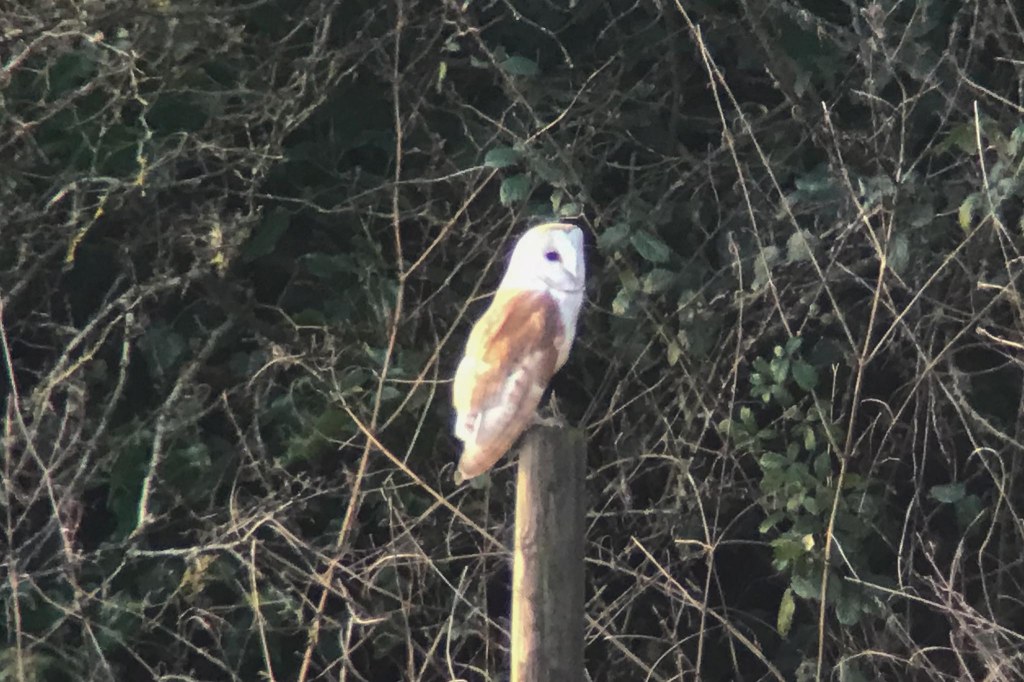
One of the Barn Owls flew off round the hedge at the back, and then the other disappeared into the trees. Thankfully the latter came out again, and quartered the field once more. This time, it landed on a post at the back and we had a good view of it in the scope. After remaining on its perch for several minutes, it flew back into the trees again and this time it didn’t come out. Two Barn Owls – a good start.
A Red Kite came up behind us, glowing in the low morning sun, then drifted over the road. A couple of Marsh Harriers were up already too, over the fields beyond.
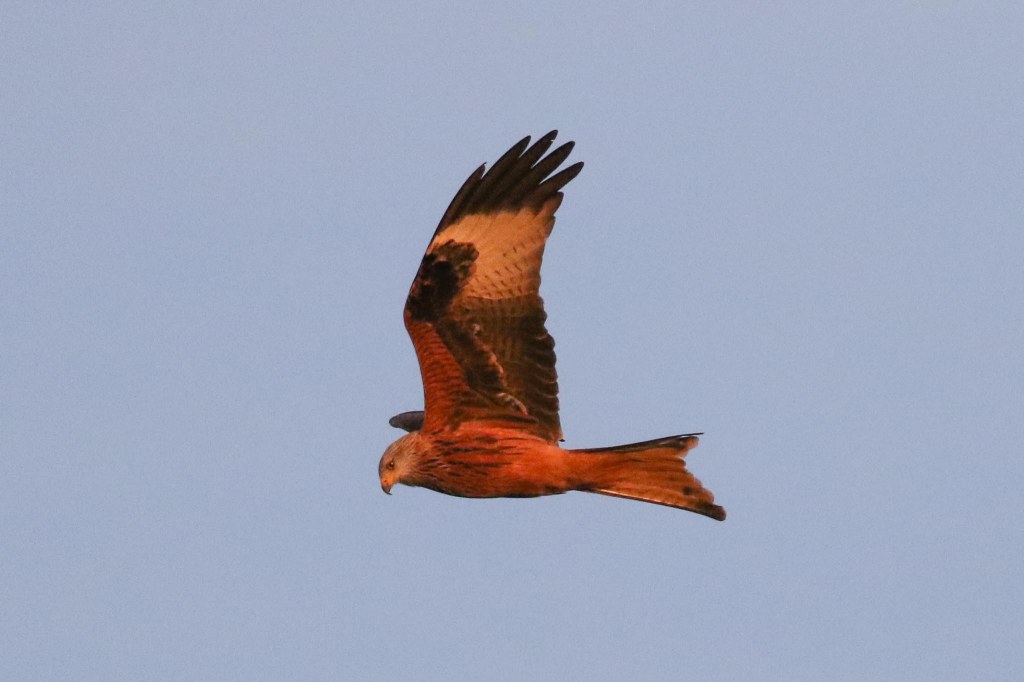
We got back in the minibus and drove round in a loop a couple of times to check some other fields. There were lots of Curlews in the wet meadows, and a Sparrowhawk circled over. But there were no more Barn Owls out now – we were very glad we started extra early this morning.
Parking by the start of a footpath, we got some Curlews in the stubble opposite in the scope. Two Stock Doves were visible just behind them too. Then we set off up the footpath.
Before we had got to the best viewing point, we looked across to a tree the other side of the field. A Tawny Owl was looking back at us from a hole halfway up the trunk. Despite us stopping and not going further up the path, it disappeared back into the hold before we could even get a scope up. They have been very nervous this year, but we figured we could try again later. A Mistle Thrush was feeding on a grassy slope in the distance and four Magpies dropped down next to it.
We walked back to the minibus and drove round to look for Little Owls next. There was no sign of any on the first barns we looked at, so we tried another set. We were just scanning when we noticed a ringtail Hen Harrier quartering the field the other side of the road. We leapt out and watched it as it flew back and forth a couple of times, before disappeared round the back of some buildings. A nice bonus!
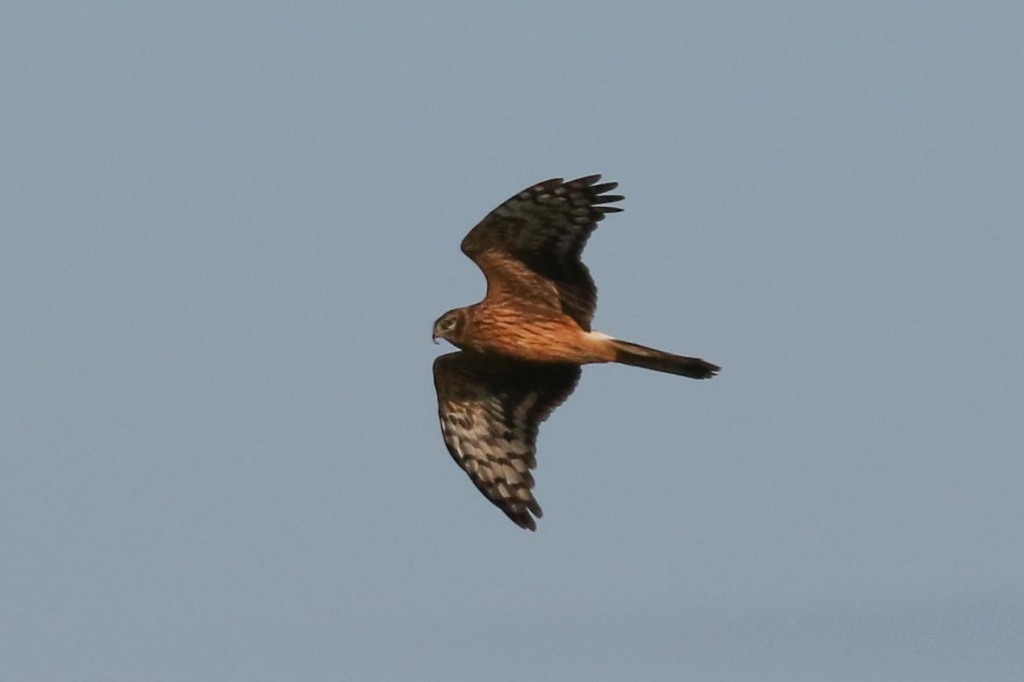
A few Skylarks were singing now and a flock of Curlews flew up from the fields. We got the scopes out and scanned some distant roofs. A Little Owl was tucked in under one, but we could only see the silhouette of the back of its head. Not the views we wanted!
So we drove back to the first set of barns we had checked and this time we were in luck. A Little Owl was had now come out and was perched up on the roof. We parked out of view and got out, walking round to where we could get the scope on it. It was still distant but a much better view than the one earlier! We tried getting a little closer, still keeping enough distance where it would normally tolerate our presence, but it was rather jumpy today and disappeared in under the roof.
It seemed like perfect weather for the Little Owls to be out, with the early sunshine, so we thought one might come out again. While we waited, we scanned the fields the other side. Three Brown Hares chased each other round and even engaged in a brief bout of boxing. A couple of small groups of Brent Geese flew inland to feed. A huge flock of Lapwing came up from the fields in the distance. A couple more Red Kites circled up, along with two Common Buzzards.
There was still no sign of the Little Owls reappearing, so we decided to move on, and come back to owls later. The Red-breasted Goose had been seen again at Cley this morning, so we dropped down to the coast to look for that.
We parked at Walsey Hills and walked back to the start of the East Bank. Two Gadwall and a drake Common Pochard were on Snipe’s Marsh as we passed. Down the steps, we went through the gate onto Attenborough Walk and set off down towards Babcock Hide. A Skylark fluttered up singing overhead.
We stopped for a quick scan of Pope’s Marsh. There were lots of ducks around the pools, lots of Wigeon, a few Shoveler and Teal and some Shelduck further back. A Redshank was feeding with some Dunlin and a small flock of Black-tailed Godwits flew in. Two Grey Herons were standing statue-like on the edge of one of the ditches, one upright, the other staring down into the water below.
A small crowd of people was gathered on the path, watching the Red-breasted Goose feeding in with a small flock of Brent Geese. It was on the far end of the flock at first, then moved back into the middle and sat down, preening. We had some nice views of it through the scope.
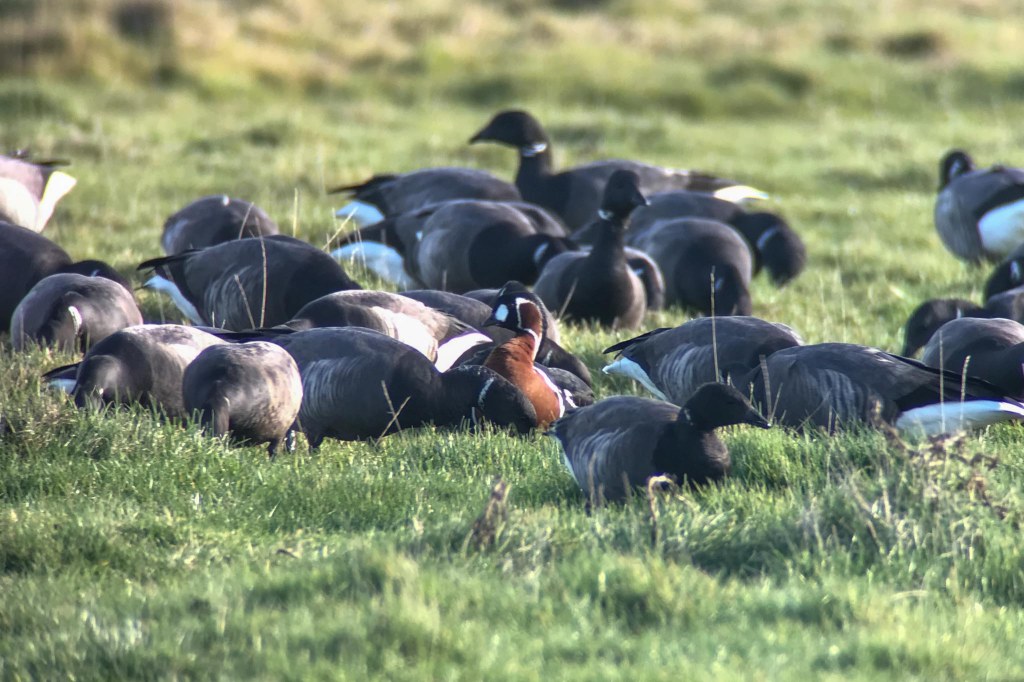
The Red-breasted Goose should be spending the winter around the Black Sea, but having lost its way it is now happy enough here with the Brent Geese instead. We had all had a good look at it when something spooked all the Brents. The Red-breasted Goose flew up too, and they all disappeared off west.
A massive flock of Pink-footed Geese came up from the fields beyond Salthouse village, several thousand in the air together, an impressive sight. They started to come past us in a succession of skeins now, and as they got closer we could hear their yelping calls.
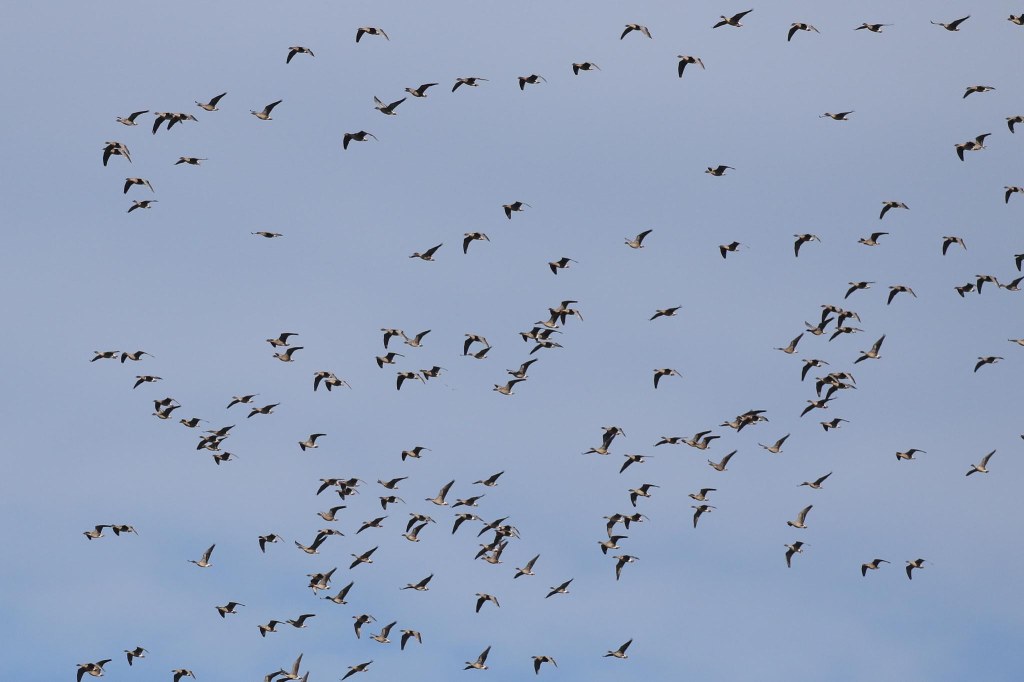
We stood and marvelled at the Pinkfeet for a while, then started to walk back. A small crowd was standing by the fence by Pope’s Marsh now, as the Red-breasted Goose had landed back down again with a few of the Brents here. We had just stopped to look when the flock flew again, and this time disappeared off over the main reedbed.
After an early start this morning, we made our way round to the Visitor Centre for a coffee break now. It was a beautiful morning in the sunshine out on the terrace overlooking the reserve. We could see a single Avocet on Pat’s Pool and several Ruff in with the Lapwings. One or two Marsh Harriers kept drifting over the scrapes periodically, flushing everything.
After coffee, we got back in the minibus and headed west. We took a detour inland, just to see if the Little Owls were performing any better and found one on the roof much closer now. We parked again and got out, and had a nice view through the scope until it darted back in underneath.
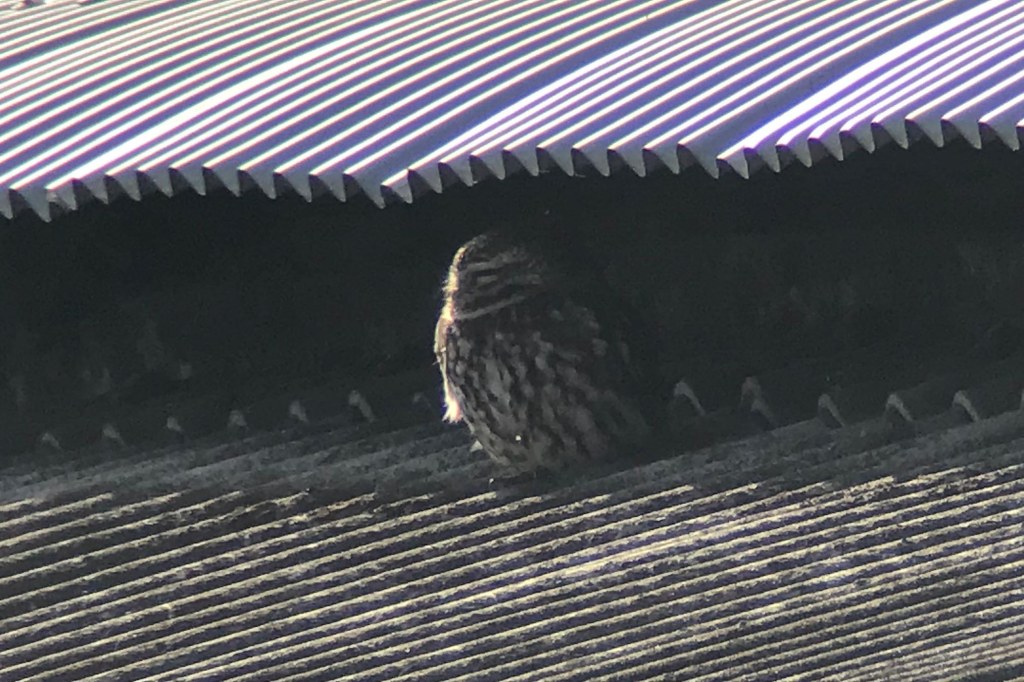
Dropping down to the coast again, we drove on to Holkham. We stopped to scan the grazing marshes by Lady Anne’s Drive first. The Wigeon were looking really smart in the sunshine, and there were close Teal and Shoveler too. Further up, a pair of Grey Partridges were pretending to be molehills, the male with its head up, keeping an eye out for any approaching danger while the female fed next to it.
It was time for lunch and we made use of the picnic tables outside the Lookout in the sunshine. As we went back to the minibus to drop off our bags, another pair of Grey Partridges ran out from behind the fence and strutted off, really close now.
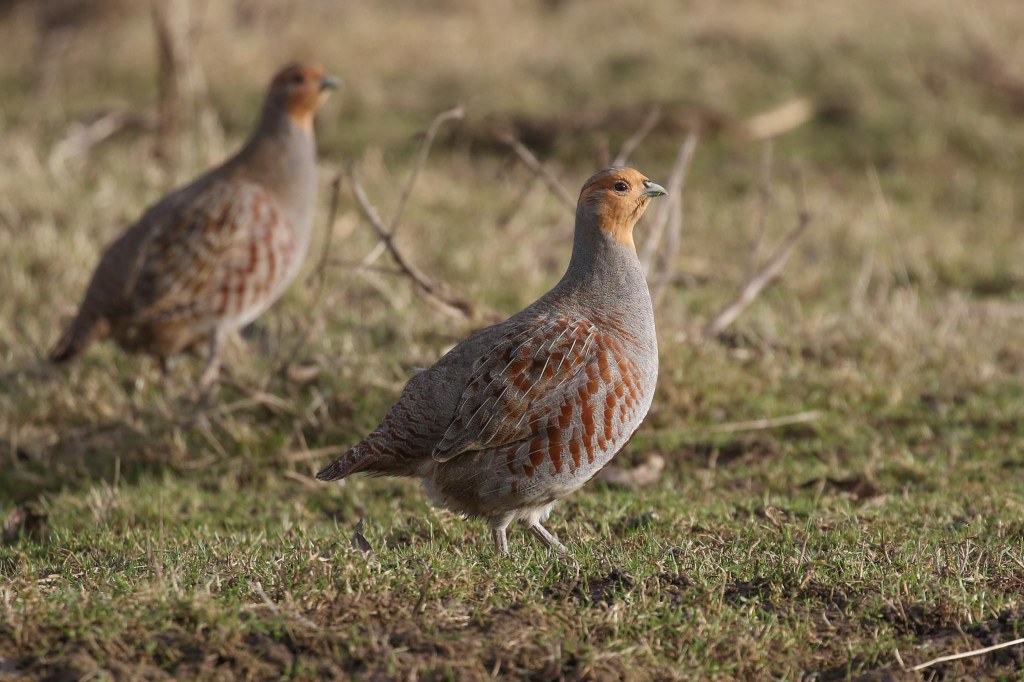
Well fed now, we stopped again for another scan of the grazing marshes. A Common Snipe was hiding down in the dead grass on the edge of one of the pools, with more further back on the bank. There were also a few Curlew and Redshank. A Fieldfare was feeding on the grass with them and we picked up a few Pinkfeet over towards the back. It was nice to have a good look at some on the ground now, through the scope. having seen the huge flocks going over earlier.
Out through the pines, we turned west through the dunes. We happened to look back, just in time to catch a flurry of Snow Buntings flying up over the saltmarsh. They dropped down briefly on the mud by the end of the boardwalk, then were off again away towards the beach. Another nice bonus.
The Shorelarks had been reported a long way further west again this morning and we thought we might have a long walk ahead but one of the locals was just heading back and came over to tell us they were conveniently just around the corner now. We walked up and there they were. We had great views of the four of them picking around just below the dunes.
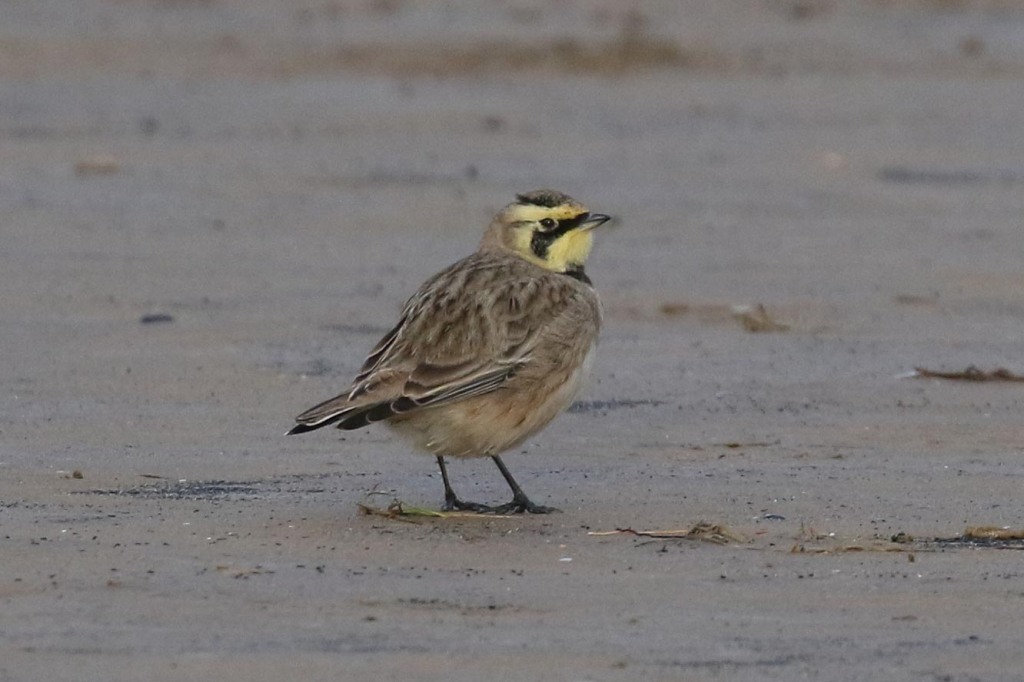
We had a quick look at the sea too, picking up a Red-breasted Merganser and two Common Scoter out on the water. Some of the Cormorants were already heading in to roost, flying in off the beach. We still had more to do this afternoon, so we set off back to Lady Anne’s Drive. On the way, a Goldcrest was singing in the holm oaks.
We headed back east via several places where we thought we might stand a chance of finding some Barn Owls out, but they are obviously not hungry at the moment and are mostly hunting after dark. Still, we did have nice views of a couple of Marsh Harriers gathering to roost.
As the sun started to go down, we headed back to try again for the Tawny Owl. There was a lovely sunset as we set off up the footpath again. A large flock of Redwings was feeding in the winter wheat now and flew up as we passed. We got ourselves in position, as a pipistrelle fluttered around the trees.
With the scope trained on the hole now, we waited. A Tawny Owl hooted from the wood, a good sign. And we didn’t have to wait too long before a Tawny Owl appeared at the entrance to the hole. It could probably see and hear us and disappeared back in. Most of the group got a look at it through the scope before it did, but we waited to see if it would come out again. After another ten minutes it reappeared. It seemed more relaxed now, as it was starting to get dark, and it stayed while we all had another long look through the scope. A perfect way to end!
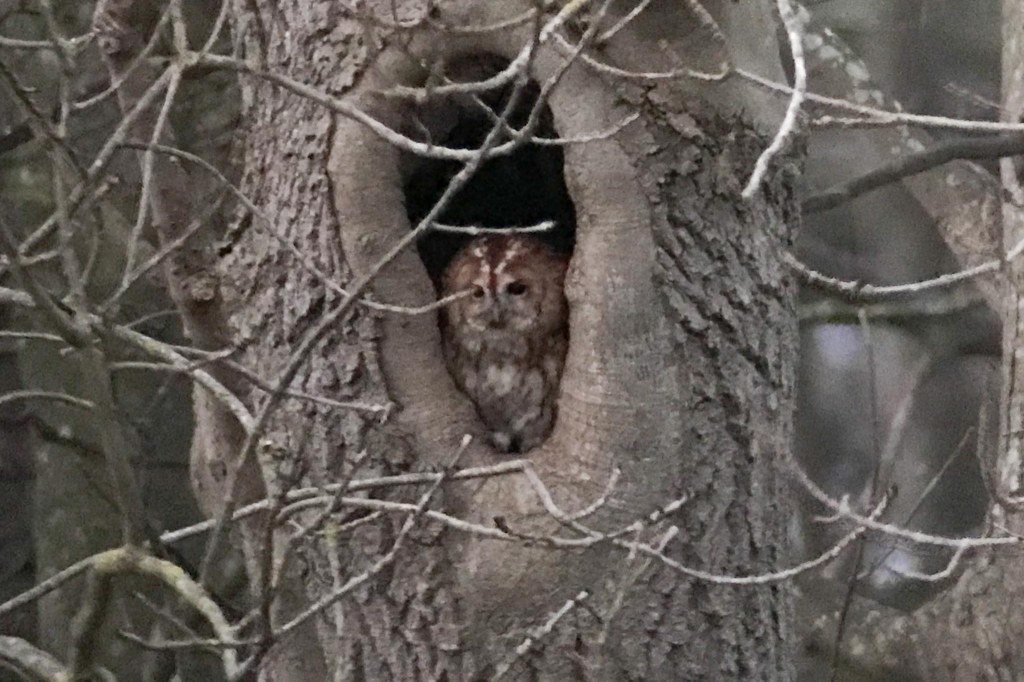
Then we left it in peace. Several Roe Deer were feeding on the other side of the hedge on the way back, and scooted off across the field as we approached. Time to head for home.
















